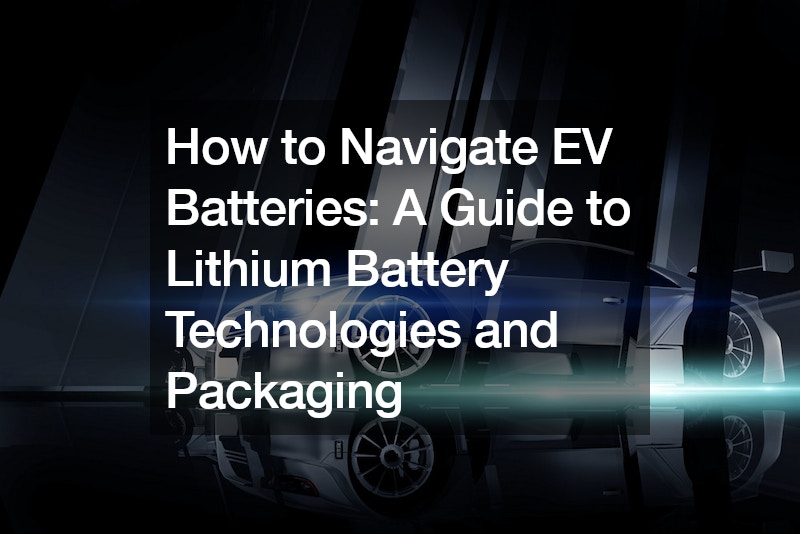

Electric vehicles (EVs) have reshaped the automotive landscape, and the driving force behind their remarkable performance lies in the intricate realm of EV batteries. Among the diverse battery technologies available, lithium-ion batteries have emerged as the clear favorite, dominating the market due to their efficiency and reliability. In this comprehensive guide, we’ll explore the various types of EV batteries, with a special focus on lithium battery technologies and the crucial aspect of EV battery packaging.
Understanding EV Battery Basics:
Before delving into the specifics of lithium battery technologies, it’s essential to grasp the fundamental workings of electric vehicle batteries. Regardless of their type, EV batteries operate by converting chemical energy stored within the battery into electricity.
This process involves the flow of electrons between the negative and positive electrodes, creating an electric current that powers the vehicle.
Types of Electric Vehicle Batteries:
The EV market offers a variety of battery types, each with unique characteristics. Lithium-ion batteries have risen to prominence, having been developed in the early ’90s. They are now synonymous with efficiency and high power-to-weight ratios, finding widespread use in various EV models, from sporty options to economical choices.
Lithium-Ion Battery Advantages:
The popularity of lithium-ion batteries is well-justified by their outstanding performance. With a high power-to-weight ratio, these batteries enhance the energy efficiency of electric vehicles. They outperform alternatives like lead-acid and nickel-metal hydride batteries, providing superior energy density and a longer lifespan.
Moreover, the adaptability of lithium-ion batteries to high temperatures contributes to their overall efficiency. The compact size and higher capacity of lithium-ion batteries, often referred to as traction battery packs, play a crucial role in extending the range that electric vehicles can achieve on a single charge.
EV Battery Packaging:
Central to electric vehicle batteries is their packaging. The term “EV battery packaging” encompasses the design and arrangement of battery components, ensuring optimal performance and safety. Lithium-ion batteries, including various types such as lithium iron phosphate and lithium nickel manganese cobalt, are meticulously designed as assemblies of individual battery units or cells.
The arrangement, size, and number of these cells influence both the voltage delivered by the battery and its overall capacity. Efficient EV battery packaging allows for a delicate balance between weight, storage capacity, production costs, and environmental impact.
Alternative Battery Technologies:
While lithium-ion batteries take the lead, it’s crucial to be aware of alternative technologies. Hybrid nickel-metal batteries, for instance, find their place in hybrid electric cars. These batteries offer a better life cycle and safety features but come with higher self-discharge rates and increased costs.
Lead-acid batteries, despite being one of the oldest rechargeable battery types, still find relevance in certain applications. Their low cost and historical use in electric vehicles contribute to their continued presence, primarily for powering electrical circuits or components specific to combustion engines.
Solid-state batteries represent a promising avenue for the future of EVs. Although still in the laboratory prototype stage, solid-state batteries have the potential to increase energy density and stability while simplifying temperature control.
Optimizing EV Battery Performance:
To ensure optimal performance and longevity of EV batteries, including lithium-ion batteries, it’s crucial to consider maintenance factors. Regular checks for loose fasteners, sealant integrity, and debris removal from the battery surface contribute to extending the lifespan of these batteries.
Additionally, adherence to manufacturer guidelines for installation techniques is essential. Different battery styles may require specific approaches, such as securing vertical panels with concealed fasteners for standing seam installations or employing a two-step manufacturing process for barrel tile panels.
Conclusion:
Mastering the realm of EV batteries involves understanding the diverse technologies available, exploring packaging designs, and adopting proper maintenance practices. The prominence of lithium-ion batteries showcases their effectiveness in powering electric vehicles. As the automotive industry continues to evolve, keeping abreast of emerging technologies, such as solid-state batteries, ensures informed decision-making for both manufacturers and consumers.
In conclusion, navigating the world of EV batteries demands a holistic understanding of the available technologies, with a specific focus on the pivotal role played by lithium battery technologies and their packaging. As the electric vehicle market continues to grow, the right knowledge empowers consumers and industry professionals alike to make informed choices, contributing to the sustainable and efficient future of transportation.
.
